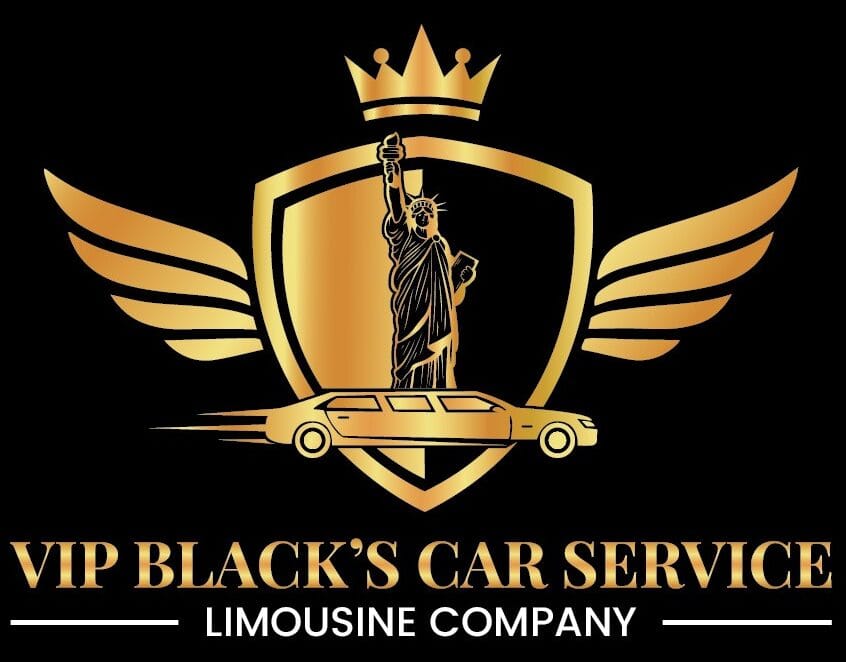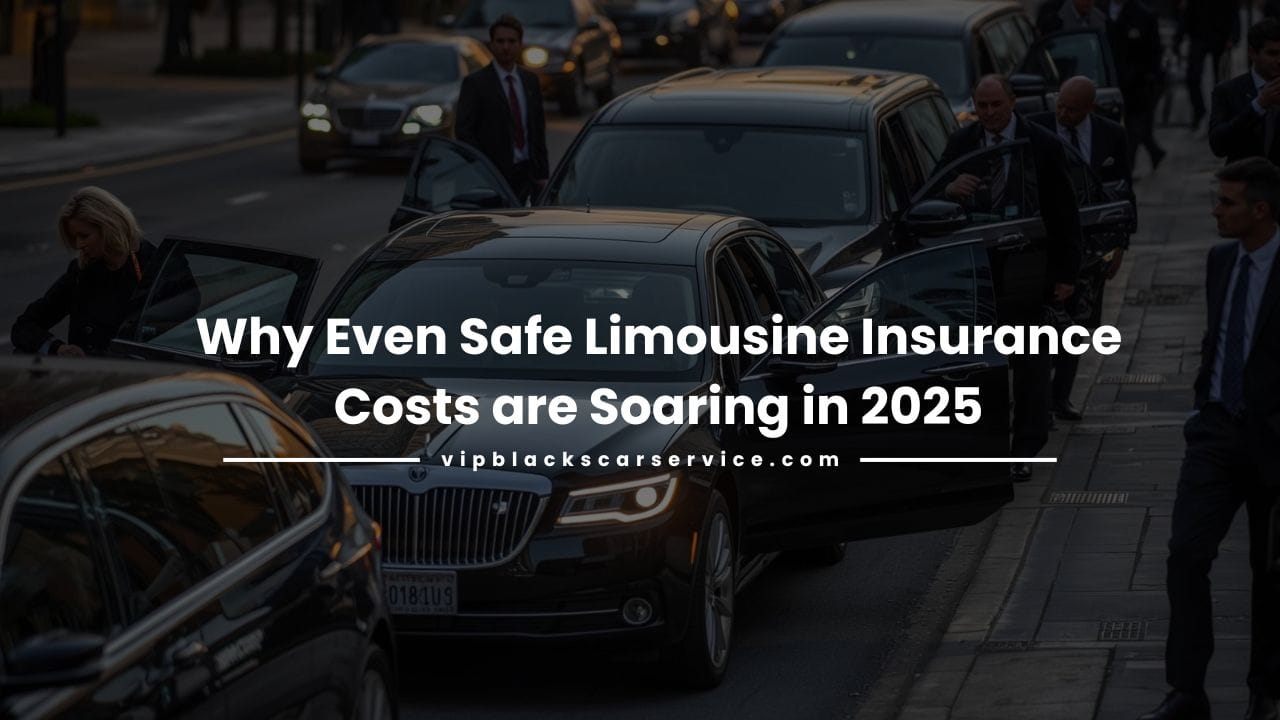A Silent Crisis in a Polished Industry
At first glance, the chauffeured transport and premium limousine service industry seems like one of the safest sectors in ground travel. Luxury vehicles, vetted chauffeurs, and elite clientele all paint a picture of reliability and professionalism. But beneath the surface, a growing concern is threatening even the most well-managed businesses, the escalating cost of limousine insurance across the United States.
Recently, the National Limousine Association (NLA) issued a serious warning about what many are calling an insurance crisis in the ground transportation industry. According to data shared by TravelDailyNews International, this issue isn’t limited to risky operators. In fact, even safe limousine operators, those with clean driving records, strong fleet safety programs, and years of incident-free service, are facing soaring limousine insurance costs that threaten their financial stability.
When “Safe” No Longer Means “Affordable”
The troubling part? Nearly half of operators surveyed reported no insurance claims in recent years, and 93% said they had no claims exceeding policy limits. Yet their commercial limousine insurance premiums continue to climb. Many are discovering that even an impeccable record doesn’t shield them from higher limousine insurance rates. This is leaving operators wondering: if spotless safety records aren’t enough to control costs, what’s really driving this premium hike?
The Industry’s Hidden Pressure Points
Behind the surge in auto insurance premiums are a mix of complex factors, rising legal settlements, ongoing insurance fraud, and outdated risk models used by transportation insurance companies. These challenges are causing limousine insurance providers to reassess risk levels across the entire market. The ripple effect is massive, especially for small and mid-sized chauffeur service businesses that rely on affordable livery insurance, fleet insurance, or limousine insurance bundles to stay operational.
In this article, we’ll unpack what’s really happening inside this evolving insurance landscape, explore why even the safest operators are paying the price, and discuss how businesses can adapt through risk management, policy optimization, and safety technology to weather this financial storm.
The Strange Paradox: Safe Operators, Rising Premiums
On the surface, you’d expect operators who have no claims, strong safety programs, and professional fleet management to be rewarded with favorable rates for their limousine insurance or commercial limousine insurance. Yet the data says otherwise. One report found that 87% of operators saw premium increases over the past three years, and 25% had hikes exceeding 25%. Meanwhile, nearly half of operators had zero claims and 93% had no claims exceeding policy limits.
So why are even “clean” operators being squeezed? The truth is, the limousine insurance market is reacting to broader economic, legal, and regulatory pressures, not just individual performance. Let’s unpack the key drivers behind these rising costs.

Driver 1: Industry-wide “Insurance Crisis” in Ground Transportation
The term insurance crisis is now used by the NLA and others to describe the predicament. The root problem isn’t always individual risk: it’s systemic. The wider market for ground transportation and livery insurance is under strain. Carriers are reassessing risk, regulatory frameworks are lagging, and legal exposures are evolving quickly.
This means that even operators with good records aren’t insulated, because the overall vehicle insurance rates and auto insurance premiums are shifting upward.
Driver 2: Insurance Fraud, Legal Settlements & Claim Frequency
Three inter-linked causes stand out:
- Insurance fraud: When fraudulent claims or inflated damages occur, insurers raise rates across the board, not just for the offenders.
- Legal settlements and litigation: When operators face large settlements, they drive up insurer losses, which get passed on. The report highlights legal settlements as a key contributing factor.
- Claim frequency (or risk of it): Even when an operator has had no claims, the broader trend of increased frequency in the sector raises underwriting cost.
These underlying cost pressures force insurers to raise premiums, even for safe operators.
Driver 3: Regulatory Delay & Underwriting Adjustments
Shifting regulatory frameworks and slow approvals for rate changes can bite operators. In many markets, insurers face delays getting rate increases approved, which can force them to preemptively raise rates, or shift risk to select industries. The industry risk category of chauffeur / limo is increasingly seen as higher risk.
Also underwriters may be tightening terms for fleet insurance and transportation insurance companies to account for emerging exposures (e.g., rideshare overlap, event transport risks).
Driver 4: Cost Pressures Shared Across Operator Size & Type
What’s particularly difficult is that the cost pressures hit operators large and small. Small independents might feel it acutely because they have less margin and fewer resources to absorb premium hikes. Larger operators may have more negotiating power, but even they are seeing upward pressure. The chauffeur service business model is being reshaped by cost inflation.
What It Means in Practice: How Much Is Insurance for a Limo Business?
One of the immediate questions operators ask: how much is insurance for a limo business? Real numbers vary widely, based on fleet size, vehicle types, geography, claims history, safety programs, and more. But the trend is clear: if your policy renewal comes up and you’ve been “clean,” you may still face a meaningful increase in your commercial limousine insurance.
For example, a fleet of 5–10 vehicles that might have paid $X in premiums two years ago might now face a 15-30% increase or more. Some carriers may require higher deductibles or tighter safety requirements.
It’s also important to revisit liability insurance for transportation company exposures: when the risk profile of the passenger transport business changes (e.g., larger vehicles, event transport, longer hours) insurers reflect that.
Steps Operators Can Take: Risk Management & Strategy
The good news: you don’t simply have to accept rate hikes, there are proactive steps you can take to better position your business. Consider this checklist:
- Implement or enhance a fleet safety program
A documented fleet safety program signals to insurers that you’re managing risk. If you’re already safe, make sure it’s formally recognised. - Leverage safety technology and insurance telematics
Modern tools such as telematics, driver-monitoring systems, and in-vehicle sensors help manage behaviour, monitor usage, and provide data. Insurers increasingly value this when assessing premiums. For example, advanced telematics may help reduce risk and thus premium. - Policy optimization and alternative models
Review your coverage regularly (policy optimization). Are you getting the right terms, are you grouped correctly (for example, as a dedicated limo operator rather than a generic fleet)? Some carriers now offer alternative models such as usage-based, shared risk pools or captive options. - Communicate your safety record & claims history
When you apply for renewal or quote, show your clean claims history, safety certifications, telematics data. Make your case. Even though you have no claims, many carriers treat the industry broadly, you want to stand out. - Work with carriers/specialists in the chauffeured segment
Not every transportation insurance company is the same. Use brokers who understand the livery / chauffeur sector. They can help negotiate or secure better terms. - Diversify cost controls
Since your business insurance inflation is partly out of your hands (industry-wide inflation, litigation costs), control other cost areas: fuel efficiency, maintenance, driver training, reducing idle time, event scheduling. Less risk exposure = better cost leverage.
Why Operators With Clean Records Still Pay
You may be wondering: “If I have zero claims, why is my rate still going up?” Here’s the logic:
- Insurers look at the macro environment; when the frequency and severity of claims rise in the broader sector (even if not your company), they adjust rates.
- Risk modelling now emphasises exposures like vehicle size, event transport, longer hours, multi-state operations, which may not show up in your claims but still increase potential risk.
- Underwriters may apply “blanket” rate adjustments in categories (such as livery, chauffeur) rather than perfect individual underwriting.
- Safety programs and clean histories help, but may not fully offset sector-wide cost pressures: premium hike and rising insurance costs are partially external to your control.
This situation is highlighted in the report: “nearly half had no claims … 93% reported no claims exceeding policy limits” yet premiums still rose.
What’s Next: Trend Outlook & Industry Implications
What does this mean for the future of the chauffeured transport / limousine category?
- We may see consolidation: smaller operators who cannot absorb high rate increases may exit, reducing competition and possibly driving higher costs further.
- Operators will likely increasingly adopt safety technology, telematics and formal risk management frameworks to differentiate themselves.
- Regulatory reform may become more urgent: The NLA is calling for faster rate-approval processes, recognition of safety programs, and legal reform to curb excessive litigation
- Insurers may propose new product innovations, e.g., usage-based fleet policies, group captive vehicles, telematics-driven premium incentives.
Table: Key Drivers & Operator Response
| Key Driver | Impact on Premiums | Operator Response |
| Insurance fraud & inflated claims | Higher loss costs => higher premiums | Enhance screening, safety programs, claims review |
| Legal settlements & litigation | Large payouts raise underwriting cost | Review contract exposures, increase liability coverage, monitor lawsuits |
| Regulatory delays & risk categorisation | Underwriters treat segment as higher risk | Lobby via trade bodies, ensure correct risk classification |
| Fleet size/type and usage (event/airport/long-haul) | Larger exposures = higher risk | Segment fleet, control vehicle mix, monitor driver hours |
| Safety programs / telematics lacking | Lack of data = higher perceived risk | Invest in telematics, document safety program |
| External cost inflation (auto parts, repair, medical) | Aggregate cost increase => premiums up | Maintenance rigour, pre-plan for repair cost rises |
Closing Thoughts
For operators in the luxury transportation space, the message is clear: even if you’ve done everything right, the rising insurance costs for the industry mean you must be proactive, strategic and data-driven. Your liability insurance for transportation companies and commercial limousine insurance policies are no longer just about cost, they’re about demonstrating value and risk control.
By embracing risk management, adopting modern safety technology and insurance telematics, optimising your policies, and engaging with insurers and brokers who know your niche, you can fight back. It’s not just about reducing costs today, but positioning your business to be resilient in tomorrow’s cost-inflated, litigious, and data-driven market.
As the NLA warns, the fleet insurance pressures in the ground transportation industry are not likely to vanish quickly. The better you adapt now, the stronger your business will be in the long run.
FAQs
Q: Does a clean claims history guarantee low premiums?
A: Unfortunately, no. While maintaining a clean history definitely helps, many transportation insurance companies are now adjusting rates based on broader industry-wide data, not just your individual performance. As noted in the recent Travel DailyNews International report, even operators with zero claims faced unexpected premium hikes. This means the overall market trends and rising legal settlements can still impact your auto insurance premiums, even if your business operates safely.
Q: What is the best way to reduce insurance costs for a limo business?
A: The best approach is a combination of smart strategies: adopt a formal fleet safety program and use insurance telematics to track driver performance, review your policy regularly with a specialized broker, optimize vehicle utilization, and negotiate terms based on verifiable operational data. In addition, building long-term relationships with your insurer and demonstrating consistent safety metrics can help you qualify for policy optimization benefits and better liability insurance for transportation company rates.
Q: Are there new insurance models emerging for limo and ground transport operators?
A: Yes. Given the financial strain and evolving risk patterns, some carriers and brokers are experimenting with alternative models like usage-based pricing, captive insurance pools, telematics-driven discounts, and coverage aligned with safety technology investments. These new models are designed to give safer operators more control over their business insurance inflation costs. Over time, such innovations could help reshape the market by rewarding low-risk, data-driven chauffeur service businesses.
Q: How important is technology in controlling insurance costs?
A: Extremely important. Investing in safety technology, real-time driver monitoring, and insurance telematics shows insurers that your company prioritizes risk management and accountability. This not only helps prevent accidents but also provides transparent data that can support lower premiums under commercial limousine insurance or livery insurance policies. Over time, consistent use of these technologies can demonstrate sustained safety performance, which builds trust with insurers and stabilizes your vehicle insurance rates.
Q: Why are insurers increasing rates even for safe operators?
A: The main drivers are rising legal settlements, frequent insurance litigation, and growing fraud in the ground transportation sector, all of which inflate overall costs for insurance providers. Even if your own claim frequency is low, you’re still affected by these broader market forces. Insurers are spreading the financial burden across all policyholders to maintain profitability, which results in higher fleet insurance costs industry-wide. Understanding these factors helps operators prepare for negotiations and push for fairer, risk-based pricing in the future.
By VIP Black’s Car Services
Licensed Chauffeured Transportation in Connecticut & New York
Committed to raising industry standards through safety, transparency, and integrity in every journey.

